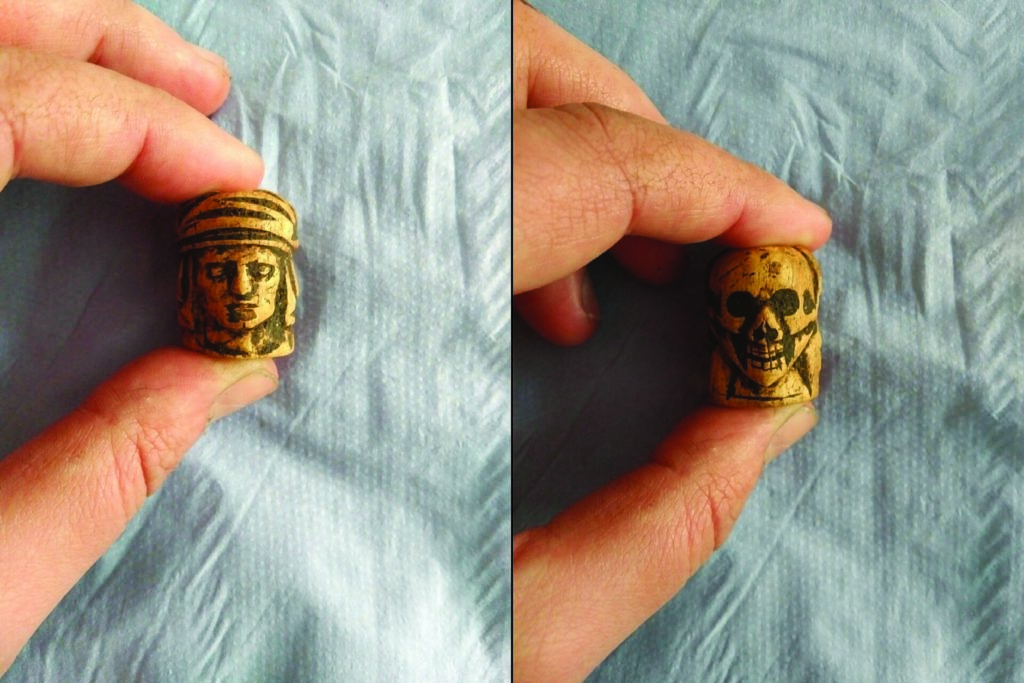Results are back for the ‘Janus faced’ late medieval ‘memento mori’ rosary bead
This series of prayers is devoted particularly to the Virgin Mary, and the beads are used as a means of keeping count during the long sequences of recitations and repetitions of the prayers.
While rosaries may have been introduced into England as early as the 11th century, the wearing of rosaries had become fashionable by the 13th century, before declining following the Protestant Reformation in the mid-16th century.
Similar ‘memento mori’ rosary beads, dating from the early-16th century, have been identified in London, and from examples of German, French and Flemish origins.
The materials from which the beads were made range from exotic and expensive materials such as coral, ivory and amber, to considerably cheaper materials such as wood and bone, as is the case of this example.
In late medieval and early post-medieval art, the concept of the ‘memento mori’ (Latin for ‘remember thy mortality’) became increasingly prevalent, juxtaposing depictions of the living with representations of death (usually skeletons or skulls).
Similar imagery appeared extensively in a variety of forms, such as paintings, wall paintings, memorial brasses and on tombs. Consequently, this rosary bead can be seen as another exposition of this theme of the relatively brief nature of life and the inevitability of death, particularly in the wake of the turmoil of the late medieval period.
The headgear depicted on the living head side of the bead appears to be a headdress of a type commonly depicted in continental Renaissance art in the 15th century and worn in England until the early 16th century. Headdresses such as these were often made of long lengths of expensive fabric and were impractical to be worn by anyone engaging in manual labour. They were therefore designed to show off the wealth and opulence of the wearer.
Rosary beads are fairly common finds during the excavation of medieval sites, but ‘memento mori’ elements of rosaries are considerably rarer. It is possible that this design of rosary was made specially to order, so despite being made of bone rather than a more expensive material, it could nevertheless be the case that the rosary pendant terminal originally belonged to a man of some wealth and status. The individual depicted on the bead may be a person known to the owner of the rosary (or the owner themselves) or may represent a generic depiction of a wealthy individual, such as a merchant.

